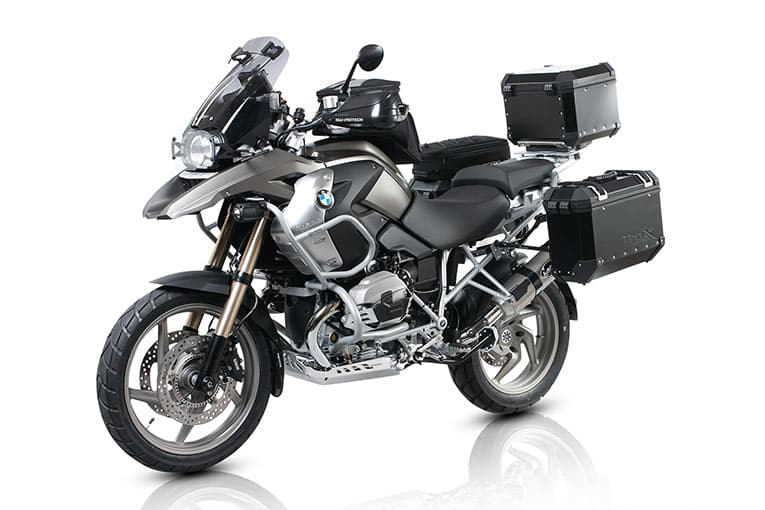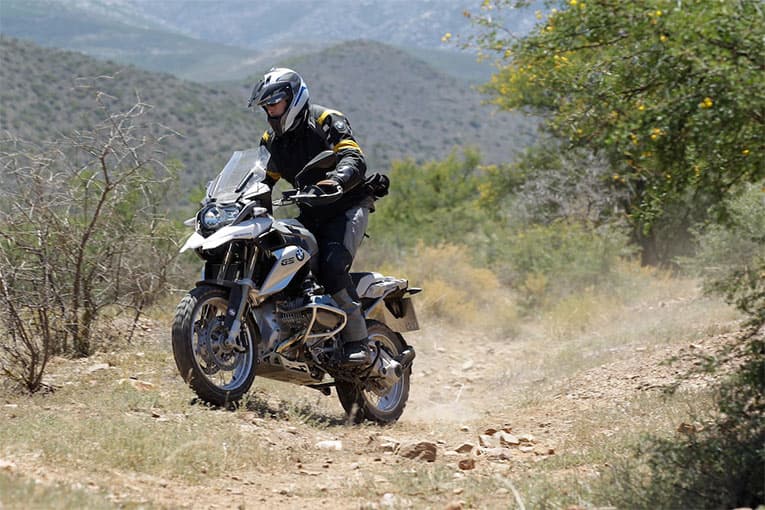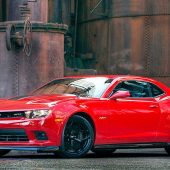Sports-style cornering on winding country roads, excellent travel times due to high motorway speeds, relaxed tours with a passenger or daring rides over rough terrain. Every BMW GS model has offered supreme mastery of these skills in its respective era and this won’t change with the new BMW R 1200 GS.
The BMW R 1200 GS is completely redefined, particularly by its drive concept. The boxer engine in the new R 1200 GS continues to use air/liquid cooling, however, the coolant oil has been replaced by a glycol-water mixture. This ensures a high level of heat absorption capacity of the cooling liquid for more efficient heat dissipation. The engine still continues to use air cooling, thereby preserving the characteristic appearance of the opposed twin boxer engine. The two radiators are small and inconspicuously integrated.

The through-flow is now vertical instead of horizontal for improved filling, and the engine housing integrates the 6-speed gearbox as well as a wet clutch with anti-hopping function instead of the dry clutch as was used previously. What is more, the secondary drive now runs via the well-established cardan shaft on the left-hand side. With an output of 92 kW (125 bhp) at 7700 rpm and 125 Nm at 6500 rpm, the new engine offers superior power and performance in the travel enduro segment and beyond. The empty weight (ready for the road) according to DIN of the R 1200 GS is 238 kg including standard BMW Motorrad Integral ABS.
An electromotive throttle actuator is now used for the first time in a GS motorcycle. Here, rider commands are passed on directly by the sensor in the accelerator twist grip to the engine control system. The use of the E-gas system provides a significant improvement in terms of controllability and response. What is more, the rider can adapt engine characteristics to the situation on the road by means of five modes (optional extra). It was also possible to include an electronic cruise control function (optional extra).
The new semiactive suspension BMW Motorrad Dynamic ESA (Electronic Suspension Adjustment) taps into a whole new range of possibilities as well as providing maximum riding safety and performance. Dynamic ESA monitors the vertical movement of front and rear wheel control as well as other parameters by means of a spring travel sensor in each position, and adapts the damping automatically to the situation depending on riding conditions and the manoeuvres being carried out. Damping adjustment at front and rear is effected by means of electrically controlled regulation valves.

The chassis of the BMW R 1200 GS uses a completely newly developed tubular all-steel bridge frame with a bolt-on rear frame. Along with the newly designed Telelever at the front and the EVO Paralever at the rear, this has resulted in a further significant increase in torsional stiffness and hence ride stability and steering precision. Optimised handling qualities are the result of refined master geometric chassis data, and a longer swingarm provides further improved traction – especially when riding over rough terrain. A globally unique feature of the new R 1200 GS are the tyres in the sizes 120/70 R19 at the front and 170/60 R17 at the rear, specially adapted to improve performance. The brake system of the BMW R 1200 GS has been extensively revised, too. There are now radially mounted Brembo Monobloc brake calipers at the front and a larger brake disc at the rear. The new GS is also fitted as standard with the BMW Motorrad ABS, here in the part integral version.
The newly developed windshield of the R 1200 GS offers further improved wind and weather protection while also reducing wind noise. The new R 1200 GS has extended adjustment options for optimum seating comfort. The rider’s seat can now be adjusted in height and tilt angle and the passenger seat can be shifted longitudinally to obtain the ideal distance between rider and passenger. The new handlebars can easily be turned upwards and, together with the optimised knee grip in the fuel tank area, they ensure an even better standing position for off-road riding. The improved knee grip can be clearly felt when seated, too. A high and a low seat, as well as an adjustable footrest system and adjustable foot controls, round off the program of special accessories offering individual adjustment facilities.










